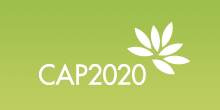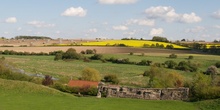Agriculture & Land Management
Our Work
Latest in Agriculture & Land Management
-
The PEGASUS project publishes its first Newsletter
Welcome to the first newsletter of the PEGASUS project! It provides information on the project’s progress to date and details on the 34 case studies currently underway in 10 EU countries examining how to ensure the improved delivery of public goods and ecosystem services in different farming and forestry situations.
-
A circular bio-economy in the European agriculture and forestry sectors
IEEP experts call for bridging the circular and bio-economy concepts, to support the transition of Europe’s land using sectors to a more resource efficient and sustainable future.
-
The Manual: Chapter 1 - Policy framework
This is a chapter of IEEP’s Manual of European Environmental Policy. In this chapter, the reader is introduced to European environmental policy, EU institutions and agencies, and the development of EU treaties.
-
Sustainable intensification of European agriculture
The concept of sustainable intensification has come into prominence in the context of global food security. This report defines what we mean by sustainable intensification, explains its global logic, discusses what it means for EU agriculture and exemplifies this in three case studies for soil performance, nutrient recycling and biodiversity.
-
On the path to a circular economy
Read the lastest edition of our newsletter for our views on the circular economy package and much more.
-
Space for energy crops – An assessment on the potential contribution of Europe’s energy future
The overall energy potential that can be produced from growing dedicated energy crops on ‘spare’ land in the EU is low. This new report explores the potential for the additional production of energy crops in Europe on land not already used for food production, forestry, or providing other important services, and assesses some of the challenges associated with increasing output.
-
High Nature Value farming throughout EU-27 and its financial support under the CAP
This study reviews Member States’ estimates of the extent of HNV farmland and use of RDP measures and the CMEF indicators, then identifies future priorities for CAP support for HNV farming and discusses the support opportunities under the reformed CAP. It offers detailed new evidence about the combined effect of Pillar 1 and Pillar 2 CAP payments on the economic and environmental viability of a typical HNV farming system in three Member States.
-
Environmental policy and the UK’s review of the EU Balance of Competences
The UK Government’s Balance of Competences review has now taken evidence on 25 subject areas, including the 6 with the most relevance for the Environment. We take stock of the IEEP’s contributions, and consider what a possible UK renegotiation might mean for the environment.
-
Options for sustainable food and agriculture in the EU
How should Europe respond to the increased demands on our food and agriculture systems arising from global population growth, changing diets, and competing demands on agricultural land? This report offers a view on how the EU could play a role in meeting these challenges in the coming decades and sets out some of the options which merit particular attention.
-
Europe’s role in feeding the world in 2050
IEEP presents views on how Europe should respond to the increased demands on our food and agriculture systems arising from global population growth, changing diets, and competing demands on agricultural land.
-
Interactions between climate change and agriculture; and between biodiversity and agriculture in Europe
What should be Europe’s role in feeding the world in 2050? This IEEP report for the European Parliament describes options for increasing the productivity of European agriculture whilst adapting to climate change, reducing emissions, and providing biodiversity and ecosystem service benefits from agriculture.
-
Sectoral resource mobilisation to implement global biodiversity targets
There is an urgent need to find sufficient resources to enable developing countries to implement the global targets for biodiversity by 2020. Financing the conservation and sustainable use of biodiversity from different sectoral funding flows can complement global biodiversity financing.
-
Ecosystem services of boreal mires and peatlands in Finland
Mire ecosystems are well-known for their unique species and habitats of high conservation value and they also provide a range of benefits to our societies and economies. This publication outlines the results of a pioneering project that aimed to identify and valuate ecosystem services provided by pristine mires and managed peatlands in Finland.
-
Incorporating biodiversity and ecosystem service values into national strategies and action plans
This guidance document has been prepared to support practitioners of National Biodiversity Strategies and Action Plans to update their plans to incorporate biodiversity and ecosystem service values. Six in depth country case studies provide common lessons of good practice.
-
Land as an Environmental Resource
How can we meet the different and often conflicting demands we make on our limited supply of rural land in Europe? A more strategic approach to the way in which land is used is needed than has been the case in the past. This report for DG Environment looks at the data, the challenges and the policy options for Europe.
-
Exploring key priorities and actions for the 7th EAP
This policy paper examines how the forthcoming 7EAP can contribute to protecting natural systems and improving the way in which we use natural resources. It also examines a number of cross-cutting actions needed to support the priorities of the 7EAP and ensure better delivery of EU environment policy.
-
European Parliament report on sustainable competitiveness and innovation
The CAP could, and should, be primarily to assist EU agriculture to become more internationally competitive and sustainable and to achieve this by innovation. It already has many instruments to do this, and the reforms could further assist. However the resources deployed could be far better used.
-
Mainstreaming the environment and climate change in the post-2013 EU budget
New IEEP paper examines the opportunities and challenges of the proposed ‘mainstreaming’ of climate change and other environmental priorities in the 2014-2020 EU budget.
-
EU Natural Resources policy: Signposts on the roadmap to sustainability
The EU is committed to building improved resource efficiency into its economic strategy, starting with a “roadmap” this year. A new paper from the Institute sets out the challenges, reviews the mixed results of previous EU policy in this area and suggests a number of ways forward. Both a broad vision and an array of practical policy initiatives are required.
Related
-

Debating the Future of The Common Agricultural Policy
The IEEP's platform to share thoughtful commentary and analysis on the future development of European agriculture and rural development policy.
Highlights
-

Land as an Environmental Resource
How can we meet the different and often conflicting demands we make on our limited supply of rural land in Europe? A more strategic approach to the way in which land is used is needed than has been the case in the past. This report for DG Environment looks at the data, the challenges and the policy options for Europe.
